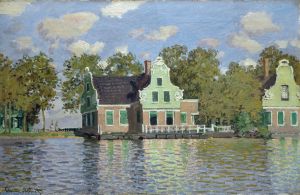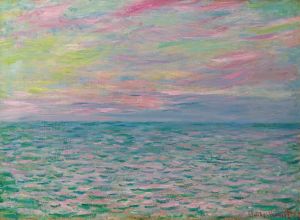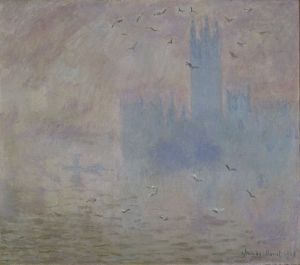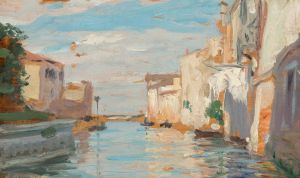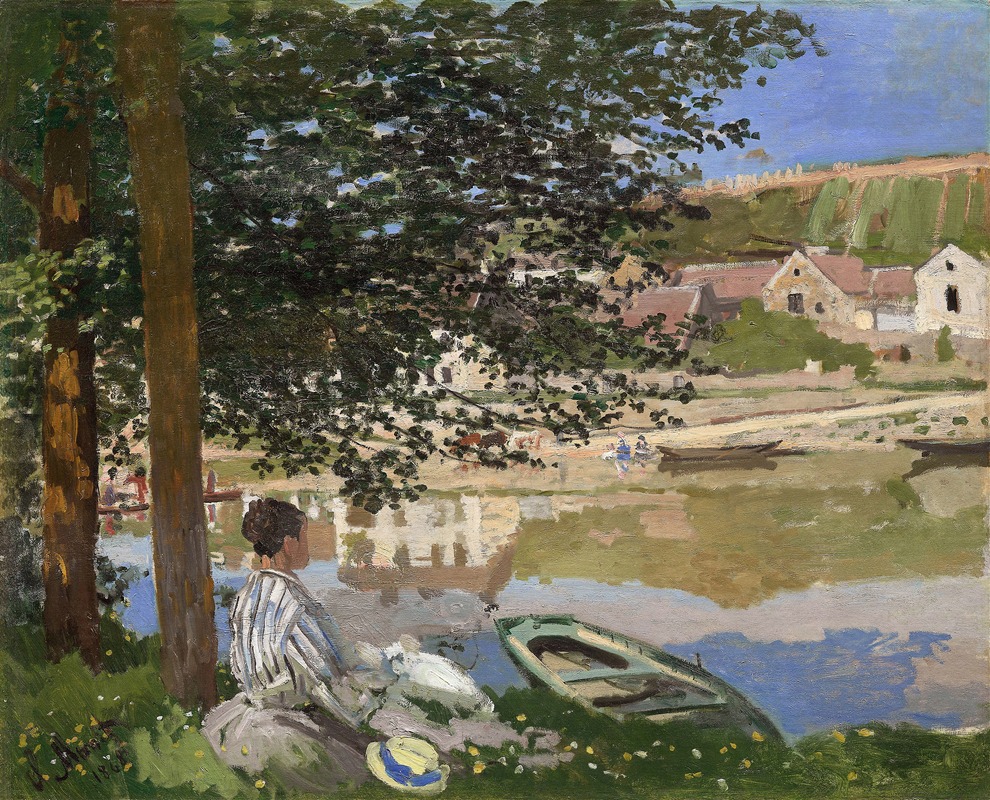
On the Bank of the Seine, Bennecourt
A hand-painted replica of Claude Monet’s masterpiece On the Bank of the Seine, Bennecourt, meticulously crafted by professional artists to capture the true essence of the original. Each piece is created with museum-quality canvas and rare mineral pigments, carefully painted by experienced artists with delicate brushstrokes and rich, layered colors to perfectly recreate the texture of the original artwork. Unlike machine-printed reproductions, this hand-painted version brings the painting to life, infused with the artist’s emotions and skill in every stroke. Whether for personal collection or home decoration, it instantly elevates the artistic atmosphere of any space.
"On the Bank of the Seine, Bennecourt" is an oil painting created by the renowned French Impressionist artist Claude Monet in 1868. This work is a quintessential example of Monet's early Impressionist style, characterized by its loose brushwork, vibrant color palette, and emphasis on capturing the effects of light.
Claude Monet, born in 1840, was a leading figure in the Impressionist movement, which sought to break away from the rigid conventions of academic painting. Instead of focusing on historical or mythological subjects, Impressionists like Monet aimed to depict contemporary life and the natural world with immediacy and spontaneity. "On the Bank of the Seine, Bennecourt" exemplifies this approach.
The painting depicts a tranquil scene along the Seine River near the village of Bennecourt, located in the Île-de-France region. This area was a frequent subject for Monet, who was drawn to its serene landscapes and the play of light on water. In the painting, a woman, believed to be Camille Doncieux, Monet's future wife, is seated on the riverbank. She is dressed in a white dress and appears to be absorbed in her surroundings, embodying the leisurely pace of rural life.
Monet's technique in this painting reflects his interest in capturing the fleeting effects of light and atmosphere. He employs short, quick brushstrokes to convey the shimmering surface of the water and the dappled sunlight filtering through the trees. The colors are bright and varied, with blues, greens, and yellows dominating the composition. This use of color and light was revolutionary at the time and marked a departure from the more subdued tones and precise details of academic art.
The composition of "On the Bank of the Seine, Bennecourt" is carefully balanced, with the figure of Camille providing a focal point amidst the expansive landscape. The riverbank curves gently into the distance, leading the viewer's eye through the scene and creating a sense of depth. Monet's ability to convey both the vastness of the landscape and the intimacy of the moment is a hallmark of his work.
This painting was created during a period of personal and professional transition for Monet. In the late 1860s, he was struggling financially and seeking recognition for his innovative style. Despite these challenges, Monet remained committed to his artistic vision, and "On the Bank of the Seine, Bennecourt" reflects his dedication to capturing the beauty of the natural world.
Today, "On the Bank of the Seine, Bennecourt" is celebrated as an important work in Monet's oeuvre and a significant example of early Impressionism. It is housed in the Art Institute of Chicago, where it continues to be admired by visitors from around the world. The painting not only showcases Monet's mastery of color and light but also offers a glimpse into the artist's personal life and the idyllic landscapes that inspired him.






